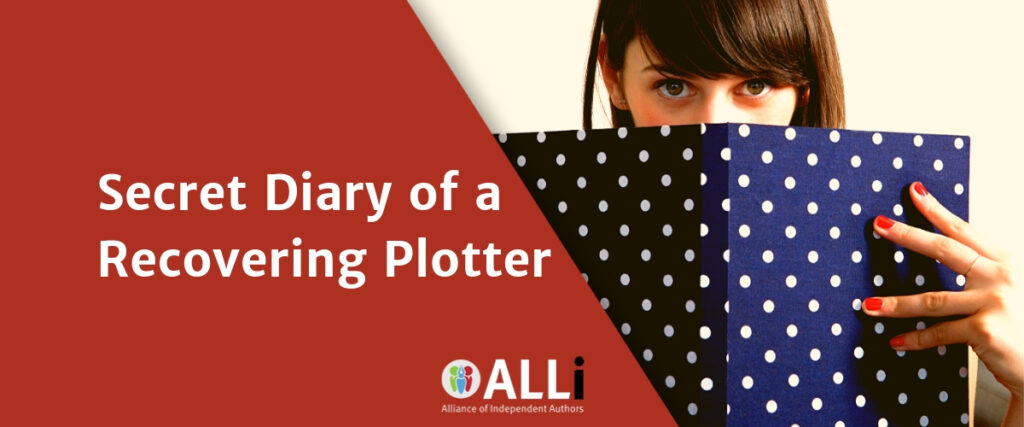 There are a handful of fundamental debates that cycle through the writing community: indie vs trad, wide vs exclusive and plotter vs pantser. Some of these debates have obvious answers, others less so. Where writers may flip between indie and trad or wide and exclusive, depending on where their business model sits, there's less movement in our methods of creating the stories themselves. Writers tend to fall somewhere on the spectrum of plotter or pantser and sit there. But ALLi blog manager Sacha Black tells a different story.
There are a handful of fundamental debates that cycle through the writing community: indie vs trad, wide vs exclusive and plotter vs pantser. Some of these debates have obvious answers, others less so. Where writers may flip between indie and trad or wide and exclusive, depending on where their business model sits, there's less movement in our methods of creating the stories themselves. Writers tend to fall somewhere on the spectrum of plotter or pantser and sit there. But ALLi blog manager Sacha Black tells a different story.
What's the difference between Plotting and Pantsing?
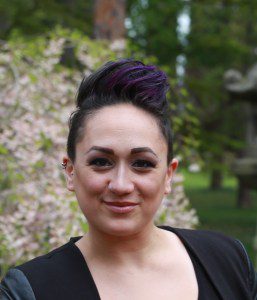
I like to think of plotting and pantsing as a continuum. On the one end, you have plotting: a structured and planned approach to writing. Typically a plotter will know as much as possible about their story before they begin. Before a plotter starts writing, they might have written:
- Character profiles
- Detailed outlines covering the story as a whole
- Chapters or scenes outlines
- Story arc outlines
A pantser takes a more fluid approach. They might not know anything before they start writing. Just the fragment of the idea that sparked the story. Of course there are many writers who mix the two and sprinkle a little of each method into their process. And in reality, whichever method you prefer doesn't really matter. What matters is finding a method that works for you and helps your creative mind spill words onto the page.
My journey as a recovering plotter addict
When I first started writing, I was a hardened plotter. I made the rookie mistake of ‘assuming' I needed to know everything about my story before I could start writing. Something that led me to not write for over a year because I was too busy killing trees and creating reams of notes. Thankfully, I bumped into the National Novel Writing Month challenge and promptly wrote 57k in a month. Ironically, I didn't refer to my notes once during that month of writing. Which left me wondering: had I wasted the last year plotting?
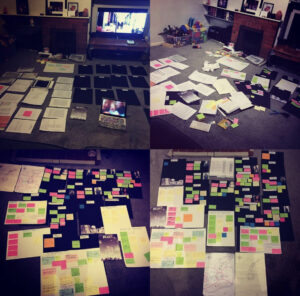
Please note, several packets of post-its died in the making of this photo
That very logical question didn't stop me continuing to plot – apparently I'm a stubborn old mule. So stubborn, in fact, my writing friends used to say my home was the place where post-its came to die!
But each time I plotted a manuscript, I'd get a few chapters in and realize the story was veering off into the wilds of my imagination, the characters weren't toeing the line and I didn't have a clue what was going to happen anyway.
Sigh.
Then I read Writing into the Dark by Dean Wesley Smith and my eyes were opened. A couple of things really stood out to me, the first was that not having an outline gave you more creative freedom to change things. Now, of course, as a plotter you're still free to change anything you've planned. But something struck home about the efficiency of that. It's more efficient not to plan if I'm going to change the story anyway. Why waste my time?
The second concept was the one that tipped me over the edge. If you don't know where your story is going, the reader won't be able to guess either. *queue a magnificently cliched cackle* That's the kind of book-mojo every author dreams of. I was sold.
I then spoke to Dean as part of the ALLi's #SelfPubCon, aka the Self-Publishing Advice Conference (and if you haven't registered for the Fall conference, you really should).
You can register here.
His session solidified my move towards pantsing – something Dean refers to as ‘writing into the dark'. If you missed his conference session, I highly recommend catching up with it right here.
Top tips for recovering writing method swappers!
If you're like me and you've either changed (or are) changing it currently, here's some top tips to help you:
- Acceptance – whether you're moving towards plotting or pantsing, you need to except that change is okay. In fact, change often sparks new ways of thinking, creates motivation and brings new ideas.
- Experiment – changing your method will upset your writing process which means it will take some experimentation to figure out what works best.
- Beat block – If you find yourself getting blocked because you've changed your process, then switch back to your old method. Whether that's planning the next couple of chapters or free writing a thousand words, try mixing and matching until you find what works.
- Sprint write – sometimes putting myself under time pressure forces me to write words, especially if I time myself along with another writing buddy.
Top tips for recovering plotters!
- Find a critique partner – one of the biggest issues for me as a pantser is that I think in an ‘out of brain' way. In that I like to physically writes notes or create diagrams to work out what I think. When I stopped plotting, I lost that ability. However, I now have a trusted critique partner who I phone if I get stuck so I can bounce ideas around and talk through character motivation. It helps that she will question decisions and motives which prevent me from writing myself into a corner.
- Early critique feedback – this is going to be controversial because I know lots of advice is to get to the end of your first draft without sharing it. But that doesn't work for me. If I pants, I'm more likely to create a plot hole if I don't have a set of objective eyes on my work before I get to the end of the first draft. I like to avoid major rewrites where possible. So I send my manuscript in chunks to my critique partner. It varies manuscript by manuscript, sometimes it's at the end of every chapter, others not until I'm over half way through.
- Edit as you go – another controversial point. But I find writing a few chapters and then cycling back through them to pick up major errors, continuity problems and tightening up the language means I keep the earlier parts of the plot fresh – so I don't make mistakes – and when I get to the end of the first draft, it's more like a second or third draft and more or less ready to go to the editor.
Plotting vs Pantsing - what happens when you change your writing method? #amwiting #WIP #writingcommunity #IARTG #ASMRG Share on X
OVER TO YOU
Have you changed your process as you've progressed through your writing journey? Who out there is a plotter and who's a pantser?
If you enjoyed this post, you might like these from the ALLi archive.

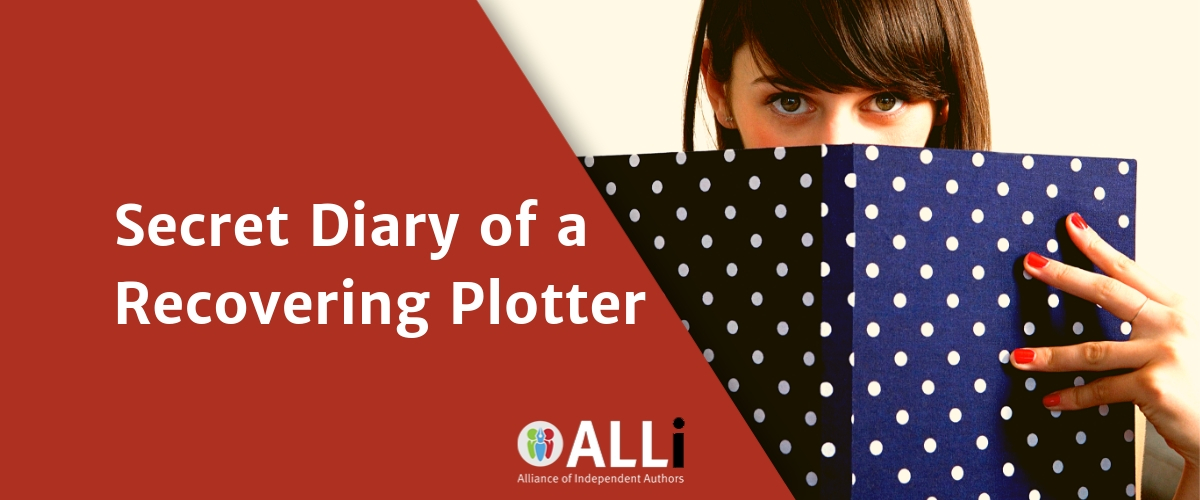

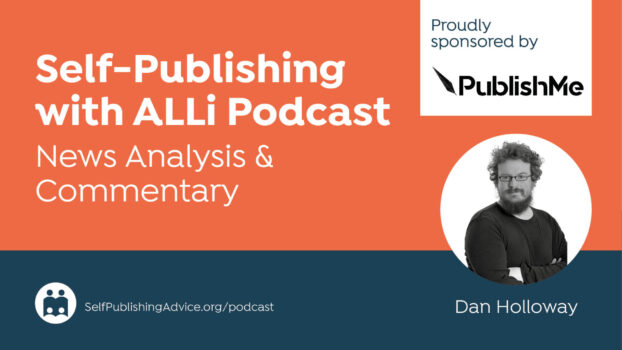

I need to have a lot of the story written in my head before I even start typing. I go over certain scenes and mentally rewrite them until I’m ready to physically write them. I also have an idea of a plot, even if it’s just ‘this will happen in this section, then this bit happens’ but it’s vague. I’ll start writing when I have lots in my head but I never have a beginning. I’m just sat there I front of the computer starring blankly wondering what to type. Eventually do a rubbish thing to get to the first scene in my head, get that down and then start editing so that the beginning is strong. From then on, I start fleshing things out and don’t move from a scene until I’m 70% happy. When I finish the first draft, i go back a week later and edit the hell out of so I’m 80% happy. Another week, I go again and make sure I’m very happy with each section, even though I can admit it’s not perfect yet. Have a story that’s 90% there but aside from one paragraph that I’m not particularly proud of, the manuscript is ready for an editor.
I have plans in my head for a whole series. I have two three scenes mapped out in my head, with dialogue, description, everything. I can see it happening in front of me, but no clue how to start it or end it! Also thought I was a pantser as I don’t write much down, but I’m 100% a plotter just all in a section in my mind full of stories.
I have a very similar story. I was a die-hard plotter with detailed beats for each book that I wrote. But after a car crash took me out of the writing game for over a year, I struggled to get back into things. It happened to coincide with the completion of a series and I couldn’t seem to get going on anything new. In the run up to NaNoWriMo last year (2018) a writing friend suggested I stop trying to plot my book, relax for a couple of weeks and just start writing on the 1st November. I did and I “won” NaNo (wrote 50k words) in 18 days.
Now I consider myself a hybrid author. I have plotted out the sequel to that NaNo novel – because for a series I do think you need continuity and a planned arc in order for it to be cohesive (or I do) – but my notes are brief, with plenty of room to write into the dark as well. All of the short stories that I write are completely written into the dark and I will continue to do that.
I think different projects may require different approaches and it’s good for a writer to be flexible.
I love the concept that different projects require different approaches, something I’m trying to embrace too. 🙂
I am a sworn Pantser, but I always toy with the idea of outlining. However, whenever I do create an outline, my brain makes me stick to it, and I end up with something messier than if I’d just “written into the dark” as Dean says. Even now, at the start of a new book (a sequel to my first) I’m toying with character stuff and figuring out high levels. My process is that I have no process. And I need to accept that.
So, in essence, this can go both ways. Pantsers also need to accept their pantsing (hehe) process, too. It’s what works for me. This article helped remind me of that.
Thank you!
I’m so glad you enjoyed it 😀